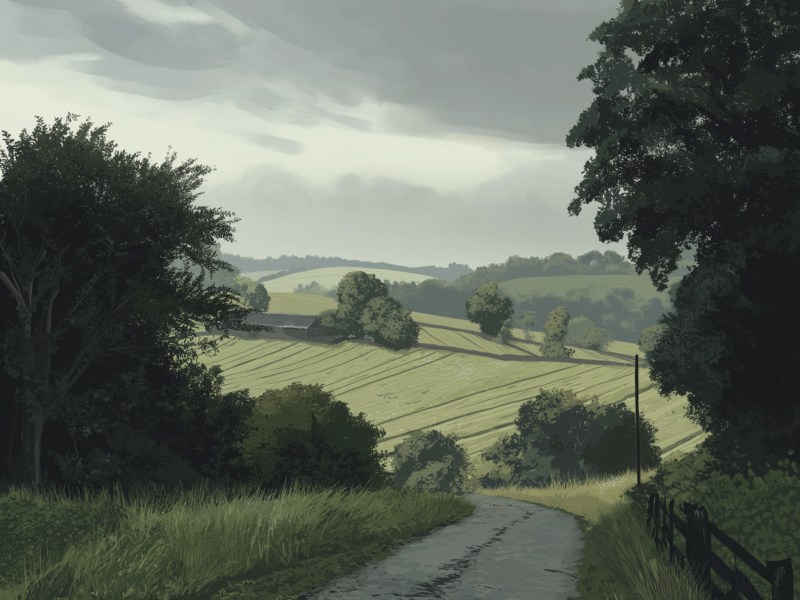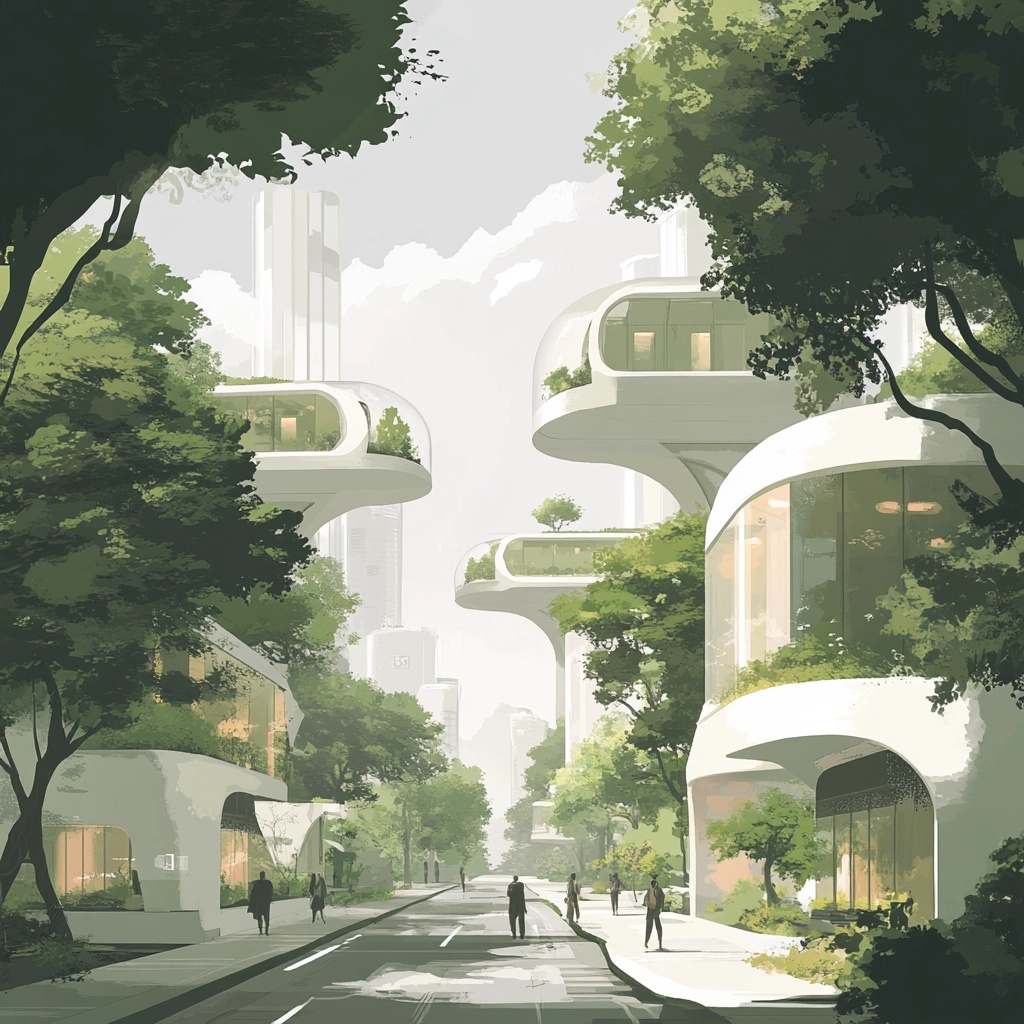
Introduction
At Working Title Architects, we are deeply invested in the future of the built environment. We collaborate with developers, landowners, and end-users to help to craft a vision for how we can creatively, sustainably and realistically improve our built environment. As you may imagine, we have been watching the recent election with anticipation, and we strongly welcome the mature, conversational focus on the design, development, planning and construction.
The newly elected Labour government has introduced an ambitious approach to economic growth, emphasising increased public spending funded through growth rather than major tax changes. Although this strategy is evolving, the core concept of fostering development remains. A key initiative is the introduction of changes to the National Planning Policy Framework (NPPF), aimed at driving growth, increasing housebuilding, and creating a more functional planning framework. This new draft, issued last week, includes several notable changes, including the reintroduction of local housing targets, the removal of the somewhat culture-war-tainted concept of “beauty” as a planning constraint in favour of a renewed emphasis on “good design,” and the relaxation of restrictions on Green Belt development. Our focus here is on the last point.
These strategic changes have the potential to reshape our towns and cities, stimulating the provision of essential built environment elements, notably housing, but also laboratories, gigafactories and data centres, as well as making changes that should help to deliver more large onshore wind projects and solar development.
Understanding the Grey Belt
The Green Belt is a phrase coined by the renowned social reformer Octavia Hill in 1875, was primarily introduced and refined as a concept throughout the 20th-century concept. It was introduced to prevent urban sprawl, maintain countryside character, and ensure access to nature. Today, the UK’s Green Belts cover approximately 12.4% of England’s land area, amounting to around 16,000 square kilometers. However, the term ‘Grey Belt’ is a more recent concept, formally adopted in planning to address misconceptions about the Green Belt’s nature.
The Green Belt often conjures images of idyllic landscapes, yet much of it comprises vacant scrubland, unproductive farmland, quarries, car parks, and sprawling light industrial premises. These areas do little to uphold the Green Belt’s primary aims, which is functionally defined using the following five points:
- To check the unrestricted sprawl of large built-up areas;
- To prevent neighbouring towns merging into one another;
- To assist in safeguarding the countryside from encroachment;
- To preserve the setting and special character of historic towns; and
- To assist in urban regeneration, by encouraging the recycling of derelict and other urban land.
The introduction of the Grey Belt concept aims to facilitate development in peripheral Green Belt areas, opening new opportunities on the edges of desirable cities. This presents an attractive proposition for developers seeking viable projects. The Grey Belt, therefore, is not a rejection of the Green Belt’s values but a reimagining of how certain areas can better serve contemporary needs.

Overview of the New NPPF Draft
The current draft of the NPPF, released on the 30th July 2024, is out for consultation until the 24th September 2024, with a targeted adoption by the year’s end. Local Authorities are encouraged to rework their Local Plans to reflect these changes. This process will inevitably take some time to work its way through the system and become functional planning legislation. However, there is an expectation that lesser weight will be given to out-of-date Local Plans by the Planning Inspectorate (PINS), where Local Plans have not been updated to reflect national policy, and this, in theory, should provide some certainty about the acceptability of projects in the shorter term.
The draft NPPF emphasises that the use of brownfield land should be the primary focus for new development, but acknowledges that brownfield development alone cannot meet housing needs. It endorses the targeted, sequential, release of Green Belt land, encouraging Local Authorities to review and release poor-quality Grey Belt land to meet local needs.
The sequential approach is crucial here, Local Authorities, if unable to meet housing needs through the development of brownfield or other unprotected spaces, are encouraged to review the extent of their Green Belt land. This involves identifying and releasing low-quality Grey Belt land, paving the way for new housing and commercial development.
Defining the Grey Belt
While the NPPF does not explicitly define Grey Belt land, it outlines core characteristics. For plan-making and decision-making, Grey Belt is identified as Green Belt land comprising previously developed land (PDL) and other areas making limited contributions to Green Belt purposes. The definition given in the draft NPPF is as follows: Grey Belt land is Green Belt land that doesn’t strongly perform against any Green Belt purpose; and have at least one of the following features:
- Land containing substantial built development, or which is fully enclosed by built form;
- Land which makes no or very little contribution to preventing neighbouring towns from merging into one another;
- Land which is dominated by urban land uses, including physical developments;
- Land which contributes little to preserving the setting and special character of historic towns
These definitions, though somewhat vague, offer a foundation for understanding what may qualify as Grey Belt. However, the inclusion of specific types of previously developed land, such as hardstanding or horticultural premises, such as glasshouses, remains under review and subject to local interpretation and legal refinement, to ensure that wider policy objectives, such as food security are still met.

Opportunities of the Grey Belt
On the face of it, the introduction of the concept of ‘Grey Belt’ land seems very sensible. The sequential approach encourages the retention of the rolling green hills that are synonymous with the Green Belt in the minds of many, and this should serve to protect the biodiversity and visual amenity of the cities, towns and countryside.
There is no doubt that poor-quality land on the edge of existing settlements or roads, as well as old petrol stations and car parks do not make a fantastic contribution to their setting in any way. They are of low ecological value and do little to enhance the character of the Green Belt, and their redevelopment should be seen as an opportunity to improve our built environment, whilst also providing much needed housing.
The greatest opportunity lies in opening up new land for development. Identifying Grey Belt land following local reviews is crucial. Where Local Authorities lack up-to-date plans or sufficient ability to meet their housing targets, homebuilders can propose projects on Grey Belt land, offering a proactive role in identifying viable sites.
The potential of Grey Belt development is vast. By focusing on areas of low ecological value, good access to infrastructure and minimal contribution to the Green Belt’s purposes, we can transform underutilised spaces into vibrant, sustainable communities. This approach aligns with the broader goals of urban regeneration, creating opportunities for innovative architectural solutions and enhancing the quality of life for residents.
Furthermore, the strategic release of Grey Belt land can drive economic growth. By unlocking these areas for development, we can stimulate investment, create jobs, and support local economies. The emphasis on sustainable development ensures that new projects not only meet housing needs but also contribute positively to the environment and society.
Challenges and Considerations
Several considerations must be noted when assessing Grey Belt opportunities, these form a series of defined ‘golden rules’ of Grey Belt development, which include:
- Environmentally safeguarded land, such as National Parks, National Landscapes, Sites of Special Scientific Interest, Areas of Outstanding Natural Beauty (AONBs), and Conservation areas and will continue to be protected.
- 50% Affordable Housing Target: This is crucial for gaining development approval, tested through the viability processes, and with benchmark land values set by national government recommendations.
- Wider Infrastructure Provision: Hefty S106 contributions may be required where existing infrastructure is insufficient, emphasising the importance of site location.
- Public Green Spaces: New or improved local green spaces accessible to the public are mandatory, enhancing the quality of the public realm.
The inclusion of these ‘golden rules’ reflects the government’s commitment to ensuring that Grey Belt development delivers tangible benefits. Affordable housing targets are particularly significant, addressing the pressing need for accessible housing and contributing to social equity. The provision of wider infrastructure and public green spaces further enhances the value of these developments, creating integrated, livable communities.
However, challenges remain. The process of defining and releasing Grey Belt land requires comprehensive reviews and local engagement. Local Authorities, often facing resource constraints, must balance competing priorities and navigate complex planning processes. Additionally, developers need to carefully consider environmental impacts, community needs, and the long-term sustainability of their projects.

What’s Next
The framework provides opportunities for responsible, high-quality interventions. Key factors include access to good transport, healthcare, education, retail, social and cultural infrastructure. Many Grey Belt opportunities already have this critical infrastructure in place.
While much detail will be refined through consultation and local policy translation, exciting opportunities exist. Developers should act swiftly to secure valuable Green Belt assets.
A recent Knight Frank study estimated that only 1% of Green Belt land has had prior development, with 40% of this within the London Metropolitan Area. Land teams across the country are likely already seeking these opportunities, but great potential remains.
The future of the Grey Belt lies in our ability to balance development with conservation. By leveraging the strategic guidance of the NPPF and engaging in thoughtful, community-oriented planning, we can unlock the potential of these areas. The role of developers, architects and planners is crucial in shaping this future, ensuring that new developments are not only functional but also enhance the character and sustainability of our built environment.
If you would like to have any help reviewing sites, and understanding their potential, whether strategically, or simply in terms of their capacity, then please get in touch, and Working Title Architects would be more than happy to help.
James Bazeley – Founder & Director
Working Title Architects

Comments